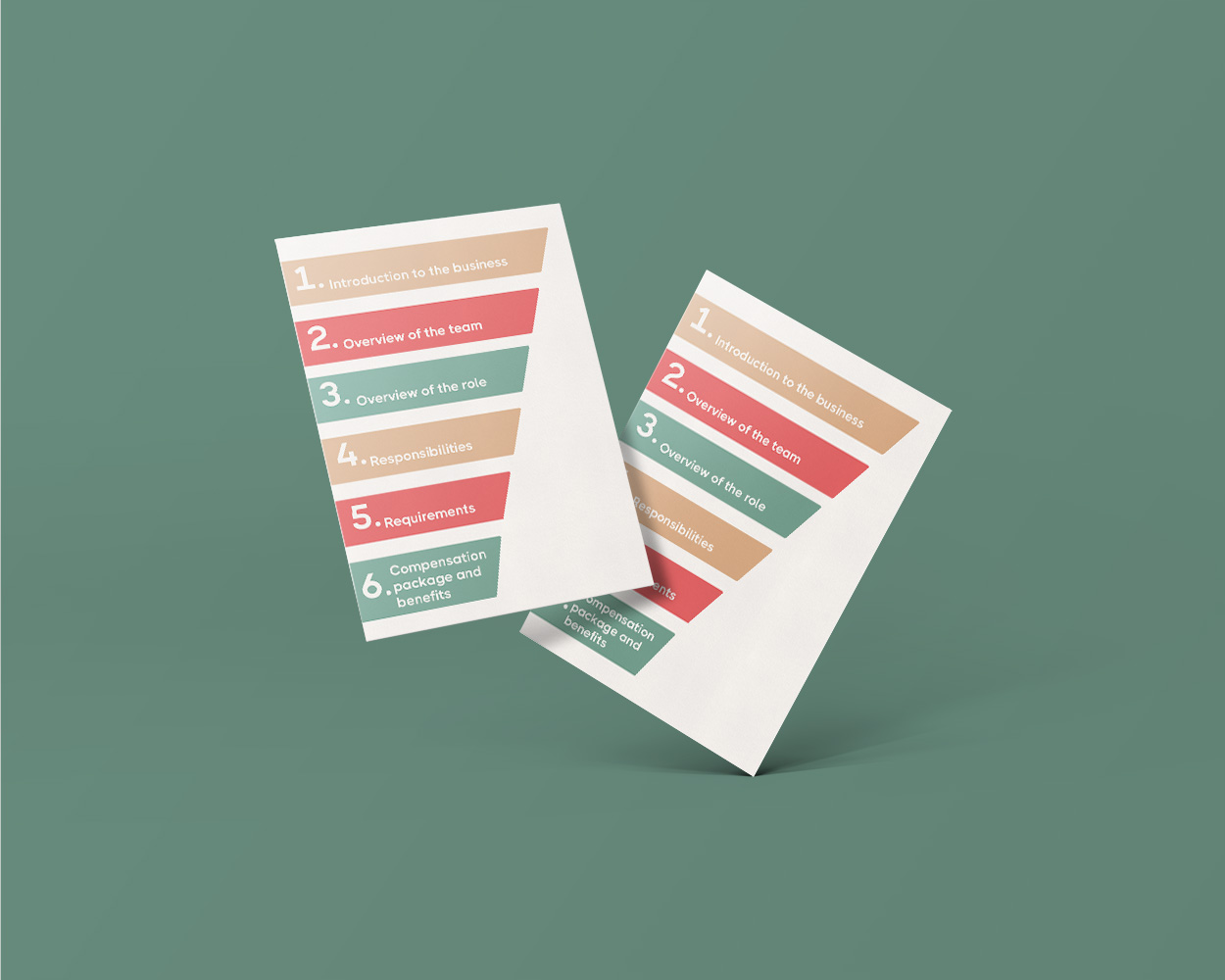
Upload Your CV
Send us your CV and a member of the team will be in touch to discuss open opportunities with you.
Writing a strong job description is the first and most important step in any successful recr...

Writing a strong job description is the first and most important step in any successful recruitment process. Our recruiters have read thousands of job descriptions throughout their careers from a wide variety of industries and backgrounds. From Marketing Executive through to CMO, they have seen the best and worst of JDs. Now, they've developed this guide to help you write your own job descriptions.
This guide will give you everything you need to get started in writing your job spec, including:
A job description is a document that clearly describes a role’s responsibilities, requirements, and objectives. You should consider the document an overview of the entire role. It should accurately reflect the job, team and business.
The JD is the most important document in the hiring process. Your job description must inform all relevant parties about the role. This includes the hiring manager, external recruitment consultants, future team members, and, of course, potential candidates.
Job descriptions should not be confused with job adverts. Job ads are written specifically to attract qualified candidates, highlighting specific pieces of information to encourage more applicants. Learn more about their differences by reading our blog, 'What is the difference between a job advert and job description?'
In this article, we'll break down how to write a job description for an effective recruitment process.
To cover everything you need, a job description should have the following six things:
Including all six points will give internal and external talent teams the information they need to source the right candidates. We break down how to write each stage below.
To help you write effective job descriptions, our consultants have developed this simple funnel structure to follow.

You should start by looking at the bigger picture before scaling down to the finer details of the role. Keep reading to understand what to include in each section on the JD.
When job seekers are actively looking for a new role, they'll be considering a variety of jobs every single day. In fact, experts recommend that job seekers apply for 10-15 roles a week. So, how do you cut through the noise and attract applicants?
What makes a role truly different is the business. As the biggest differentiator, you should start your job description with an introduction to the company. This allows you to communicate what makes the position unique from the very beginning.
First, consider why your business is an exciting one to work for - why have others joined the company? This should form your opening sentences. Then, give a broader description of the current state of your business and the direction it's headed in.
Equally, the team holds a lot of weight in decision making. Your next step should be describing the team that the role will be joining.
First, detail the current team structure and growth opportunities for the team as a whole and individuals. You can also include career backgrounds of individuals to paint a clearer picture of who the new hire will be working with.
This section should also detail where the role sits in the team, including their line manager and if they'll be managing anyone. Lastly, include job titles that the person can expect to work with outside the team. For example, share whether they will need to maintain regular communication with the C-suite or external agencies.
Top tip: Including information about recent or upcoming promotions shows investment in your team.
Moving on to the job specification itself, you should include a brief summary of the role before getting into the details. This section is especially important, as recruiters will use it to sell the job to candidates.
When writing the job brief, you should hook people in from the start. Make your introduction to this section exciting, including an insight into the opportunity for personal and professional growth. You could think about:
Next, you should list the role’s day to day responsibilities, bullet pointing everything the individual will look after.
To make this section engaging, we recommend telling a story. For example, opening with “What does an average day look like for 3Search’s Marketing Manager” can be really effective.
Include as much detail as possible and the results you expect to see from the activities. It's important that this document is exhaustive so that everyone is aligned on the parameters of the job and understands the impact it will have on the business.
The requirements section should describe the candidate profile needed to perform the job.
You should be as specific as possible with the skills and experience you require for the position. However, it's important to prioritise what you’re looking for. Decide which elements are essential and which are “nice-to-have"s. Listing too many essential requirements will rule top talent out of the process too early.
Top tip: When speaking to employers about their job descriptions, we recommend only highlighting one or two essential requirements. This keeps the talent pool as broad as possible.
Last, but by no means least, your job description should include details around the compensation package on offer.
First, clarify the salary range for the position and other perks that your company offers. Next, include details outside of your traditional compensation package, including:
We hope this guide proved useful in starting your recruitment process. For further support with writing your job description, download our JD template by completing the form below.
If you're ready to begin hiring, upload your vacancy here and one of our expert recruiters will be in touch!